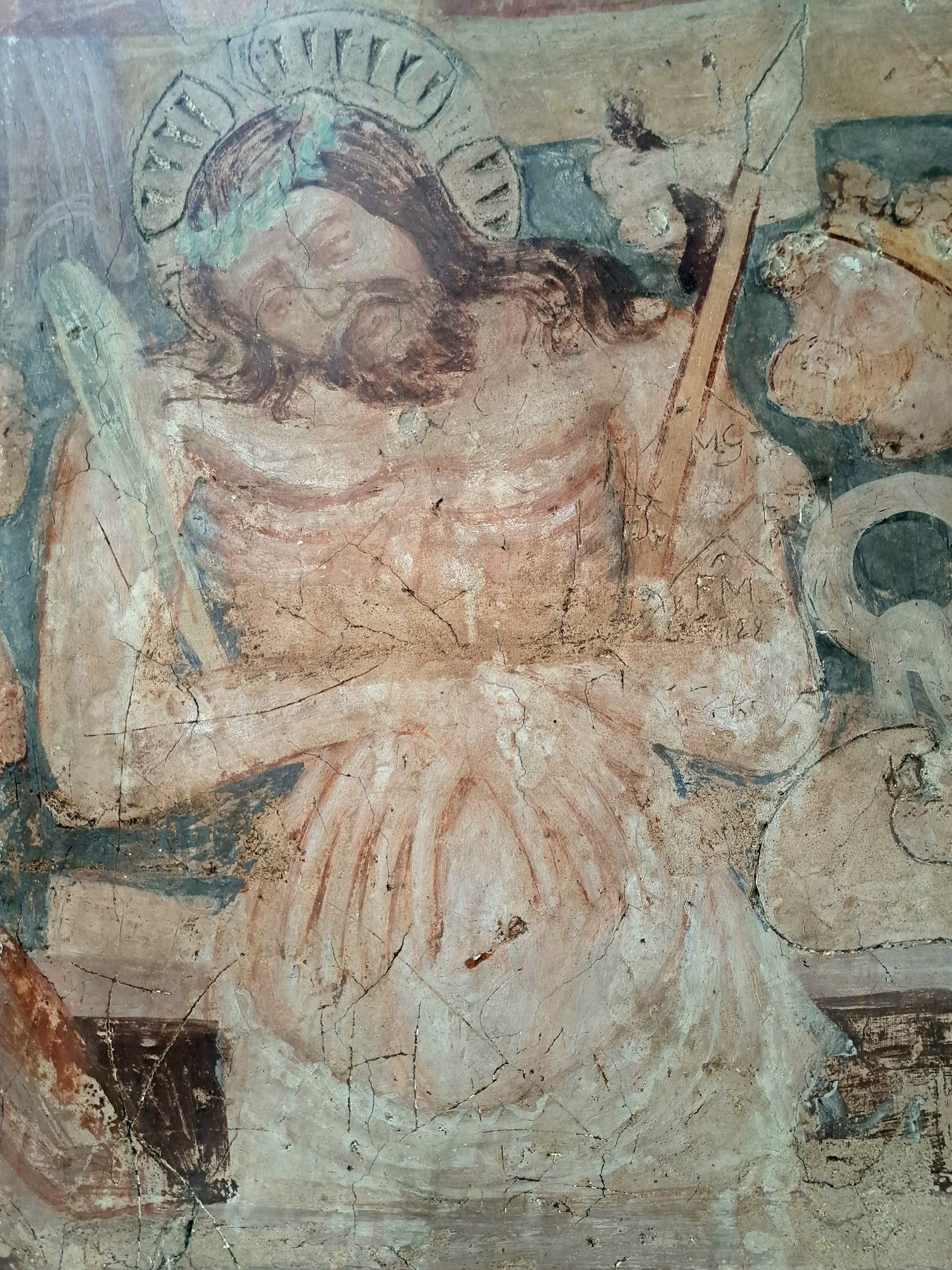Rediscovering Joannes Aquila: The Majestic Fresco of Martjanci in Slovenia
/In the heart of Slovenia, within the serene village of Martjanci, stands a monument of artistic and historical significance that whispers tales from the past—the Church of St. Martin. Among its treasured artworks is a captivating fresco by Joannes Aquila, a name that resonates with the aura of the Renaissance, yet remains enigmatic, inviting art enthusiasts and historians alike to delve deeper.
Joannes Aquila, a master of his craft in the late 15th century, gifted the church with one of his remarkable creations. His fresco in Martjanci is not just an artwork; it is a narrative woven in colors and shapes, encapsulating the essence of spiritual and cultural life of its time. But who was Joannes Aquila? And why does his work in Martjanci deserve a closer look?
Aquila was known for his ability to blend divine inspiration with earthly realism, a talent that made his work stand out during the Renaissance period in Slovenia. The fresco at Martjanci serves as a splendid example of his artistry, showcasing his meticulous attention to detail and a vibrant palette that brings biblical stories to life.
A Journey Through Time
The fresco in the Church of St. Martin is a visual feast, rich with biblical symbolism and detailed imagery that reflects the religious fervour of the era. Aquila's work is a masterclass in storytelling through art, with each brushstroke inviting the viewer into a dialogue with the past.
One cannot help but admire how Aquila has captured the essence of divine narratives, rendering them with a realism that was ahead of his time. The characters in his frescoes are depicted with such emotion and depth that they seem to leap out of the walls, inviting onlookers into their sacred world.
The Artistic and Spiritual Significance
For enthusiasts of art and history, Joannes Aquila's fresco offers a unique insight into the spiritual life of the Renaissance period in Slovenia. It reminds us of the power of art to transcend time, preserving the stories and beliefs of a bygone era for future generations to admire and learn from.
Moreover, Aquila's work in Martjanci is a testament to the rich cultural tapestry of Slovenia, a country where art and history intertwine to tell the story of its people and their spiritual journey through the ages.
The Content of the Fresco
Typically, Aquila's frescoes include scenes from the life of Christ, the Virgin Mary, and the saints, rendered with a narrative vitality that was innovative for its time. In Martjanci, it's plausible the fresco could illustrate pivotal moments such as:
The Last Supper: A central theme in Christian art, depicting Jesus sharing his final meal with his disciples, instituting the Eucharist. The depiction of this scene would emphasize unity, betrayal, and the sacramental aspect of Christianity.
The Crucifixion: A powerful and emotive portrayal of Christ's sacrifice, highlighting themes of suffering, redemption, and love. This scene, if included, would serve as a focal point for contemplation and devotion.
The Resurrection: Symbolizing hope and the victory over death, a depiction of the Resurrection would affirm the core Christian belief in Jesus's triumph and eternal life.
Scenes from the Lives of Saints: Including patron saints or locally venerated figures, these scenes would connect the community's religious and cultural identity, showcasing the virtues and miracles associated with the saints.
Symbolism and Interpretation
Aquila's fresco, through its intricate details and symbolic elements, invites viewers to explore the deeper meanings embedded within the Christian faith. For instance:
Light and Darkness: The use of light to symbolize divine presence and enlightenment, contrasted with darkness representing ignorance or evil, could be a recurring motif.
Color Symbolism: Specific colors used by Aquila may carry symbolic weight, such as blue for divinity and purity, red for martyrdom and sacrifice, and gold for heavenly glory.
Iconographic Details: Elements like halos, specific gestures, and attributes (objects associated with saints) help identify figures and convey their significance within the Christian tradition.
Engaging with the Fresco Today
For modern viewers and photography enthusiasts like your audience, Aquila's fresco offers a unique opportunity to engage with the past through the lens of visual art. Encouraging readers to reflect on the fresco's storytelling power, its historical context, and its spiritual messages can enrich their appreciation of this artistic treasure.
By exploring the specific scenes and symbolism within the fresco, your blog post will not only highlight the artistic brilliance of Joannes Aquila but also invite readers to contemplate the universal themes of faith, sacrifice, and redemption that resonate through his work.
If you are looking for my Blog Post about Velemer church is here











